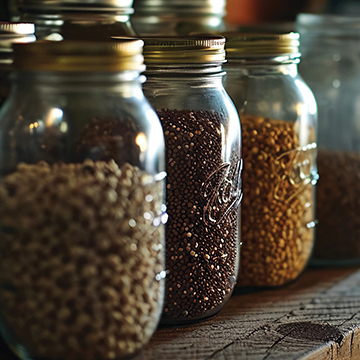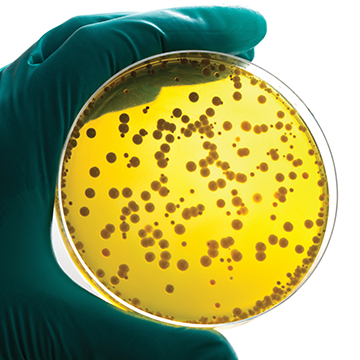
Why is dry canning not safe?
 You may have heard about “dry canning” shared on social media. Maybe you heard acquaintances talking about it. “Dry canning” is not really “canning.” The practice of sealing flour, nuts, beans, oats or other foods in jars after heating them in some way, such as in an oven, is promoted as a way to extend the shelf life of foods.
You may have heard about “dry canning” shared on social media. Maybe you heard acquaintances talking about it. “Dry canning” is not really “canning.” The practice of sealing flour, nuts, beans, oats or other foods in jars after heating them in some way, such as in an oven, is promoted as a way to extend the shelf life of foods.
Sometimes the lid and ring are placed on the jar before heating, and sometimes, after heating. While the jars may “seal” due to the heat, a true vacuum seal is not created.
Why is dry canning unsafe? All foods contain some amount of water. Moisture pockets could remain in the food in a sealed jar. The moisture level may be great enough to support the growth of spores from bacteria such as Clostridium botulinum. By heating nuts or other fat-containing foods, you may be promoting rancidity and its off flavors and smells. You may, in fact, be decreasing the shelf life of foods.
- Best practice: Store dry goods in a sealed container in a cool, dark and dry place. Refrigerating or freezing flour and other grains and nuts will extend their shelf life. Beans have a long shelf life, but it can be extended with freezing.
More recently, you may have heard about dry-canning vegetables, such as raw or cooked potatoes, without any added liquid. This is followed by processing in a pressure canner. Dry canning vegetables is especially risky and could result in the production of the toxin that causes botulism.
 Safe canning of vegetables requires liquid to allow for heat transfer throughout the jar during processing, followed by pressure canning according to the current guidance. The vegetables without added liquid, therefore, are not heated evenly during processing and the bacterial spores are not destroyed. Procedures have been developed to ensure that food in jars remains safe. Low-acid foods, such as vegetables, must be pressure canned (or frozen) following research-tested procedures to ensure safety.
Safe canning of vegetables requires liquid to allow for heat transfer throughout the jar during processing, followed by pressure canning according to the current guidance. The vegetables without added liquid, therefore, are not heated evenly during processing and the bacterial spores are not destroyed. Procedures have been developed to ensure that food in jars remains safe. Low-acid foods, such as vegetables, must be pressure canned (or frozen) following research-tested procedures to ensure safety.
- Best practice: Contact your Extension office or website for research-based information about safely canning a wide range of vegetables, fruits and other foods. This website: North Central Food Safety Extension Network provides links to Extension resources in the 12 states of the North Central region.
Why is pressure important in pressure canning?

The high temperature due to pressure allows us to can low-acid foods for a relatively short period. Before the widespread introduction of home pressure canning appliances, canning instructions advised the consumer to process green peas in a boiling water canner at 212°F for 3 hours. Now, the approved recipe recommends consumers process green peas in a pressure canner at 10 or 11 psig (roughly 240°F) for 40 minutes. The high temperature dramatically reduces the time needed to destroy the spores of Clostridium botulinum and improves the quality of the final product. Approved safe recipes for pressure canning can be found at the National Center for Home Food Preservation: nchfp.uga.edu and at local Extension programs.